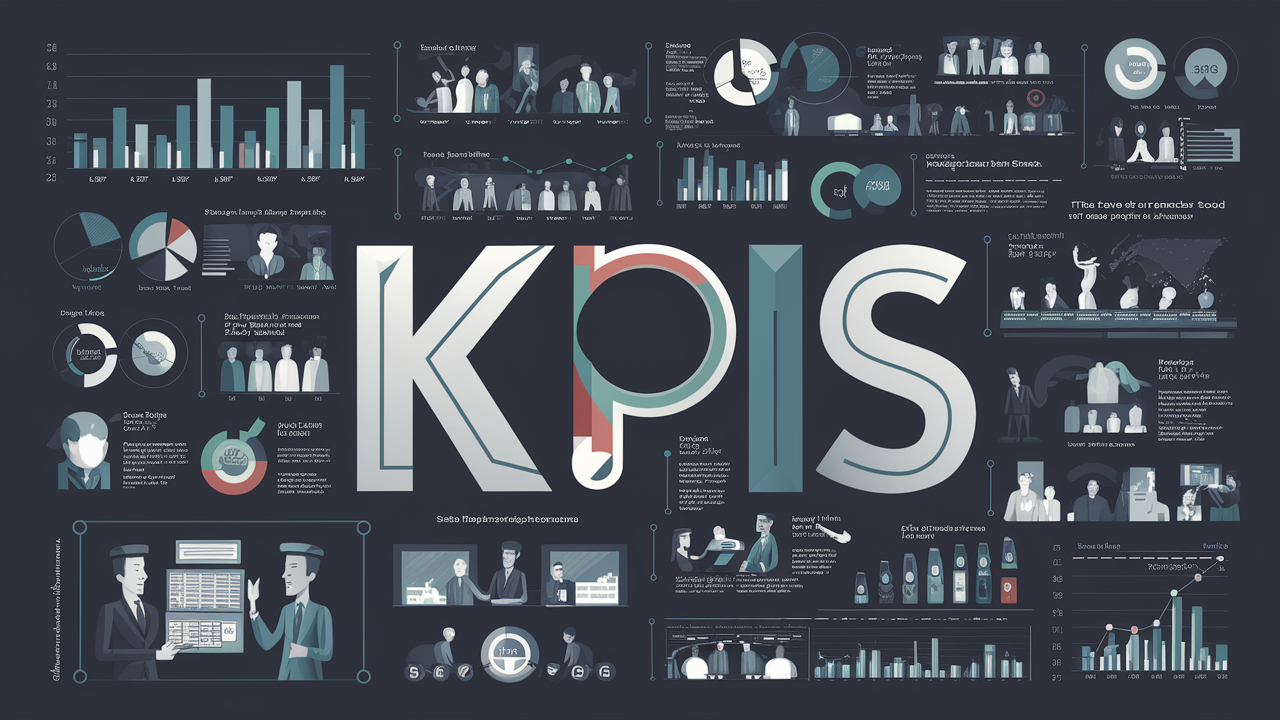Introduction
Key Performance Indicators (KPIs) are essential tools for aligning employee performance with business goals. By establishing precise and relevant KPIs, businesses can track their employees’ progress toward corporate objectives, ensuring that efforts are directed towards achieving strategic outcomes.
Measuring Performance and Productivity
KPIs serve as benchmarks for performance and productivity. They allow managers to assess whether employees are meeting their targets and contributing effectively to the company’s goals. For instance, a sales team’s KPIs might include the number of sales calls made or deals closed, while a customer service team’s KPIs could focus on response times and customer satisfaction ratings. By quantifying these activities, organizations can ensure employees are working efficiently and meeting the necessary standards for success.
Fostering a culture of continuous improvement, KPIs ensure that the organization is always moving forward in an ever-changing business environment
Enhancing Employee Engagement and Motivation
Clear KPIs help employees understand what is expected of them, which enhances engagement and motivation. When employees see how their efforts contribute to the larger picture, they gain a sense of direction and purpose. Achieving or exceeding KPIs can boost motivation and job satisfaction, leading to a more positive work environment and potentially reducing staff turnover.
Identifying Training and Development Needs
KPIs can highlight areas where employees may need additional training or development. If someone consistently fails to meet their KPIs, it may indicate the need for further education or support. This insight allows companies to tailor their training programs to address specific skill gaps, thereby enhancing the overall competency and capabilities of their workforce.
Informing Strategic Decision-Making
Data from KPIs can inform strategic business decisions. For example, if a team consistently exceeds its KPIs, it may suggest they are ready to take on more ambitious projects or explore new markets. Conversely, if KPIs are not met, it might be necessary to re-evaluate current strategies or reallocate resources to improve performance.
Fostering a Culture of Continuous Improvement
Regularly reviewing and adjusting KPIs promotes a culture of continuous improvement. This ongoing refinement process encourages innovation and ensures the company remains agile and competitive in a dynamic business environment.
Crafting and Evaluating Effective Staff KPIs
Aligning KPIs with Business Goals
Effective KPIs should align with your business goals. Each KPI must be directly related to an area of your business plan, ensuring that all team activities contribute to the company’s overall success. For example, if your goal is to improve customer satisfaction, a relevant KPI could be to enhance customer service response times.
Involving Employees in the KPI Setting Process
Involving employees in the KPI creation process fosters a sense of ownership and accountability. When employees participate in discussions about KPIs, they gain a deeper understanding of how their roles impact the organization and can offer valuable insights. This collaborative approach can lead to increased motivation and performance.
Defining Specific and Measurable KPIs
KPIs should be SMART (Specific, Measurable, Achievable, Relevant, and Time-bound). For instance, rather than setting a vague KPI like “improve sales,” a SMART KPI would be “increase sales of Product X by 10% by the end of Q2.” This clarity enables transparent performance tracking and assessment.
Reviewing KPIs Regularly
Given the ever-changing business landscape, regular KPI reviews are essential to ensure they remain aligned with current business goals. These reviews should occur at least annually, with more frequent assessments as needed. During these reviews, assess progress, ensure relevance, and make necessary adjustments.

KPI Success Stories: Insights and Best Practices
Case Studies of Successful KPI Implementation
A mid-sized e-commerce company improved customer service by setting specific KPIs for response times and satisfaction. Regular reviews identified bottlenecks and informed training programs, resulting in a 25% increase in customer satisfaction within six months.
A manufacturing firm used KPIs to track production stages, identifying inefficiencies and streamlining operations. This led to a 15% reduction in manufacturing time and more timely deliveries.
KPIs should be dynamic, reflecting current business priorities
Best Practices in Defining and Reviewing KPIs
When defining KPIs, ensure they are SMART. Involving team members in the KPI formulation process enhances buy-in and understanding. Regular reviews, structured and involving all stakeholders, facilitate open discussions and collaborative problem-solving.
Common Pitfalls to Avoid
Avoid setting too many KPIs, which can overwhelm employees and dilute focus. Focus on key measures that reflect business objectives. Update KPIs as the business evolves, and use them as starting points for deeper analysis, not as sole decision-making bases. Avoid KPIs that encourage undesirable behaviors, such as prioritizing quantity over quality.
By aligning KPIs with business goals, involving employees in the process, and regularly reviewing and refining these indicators, businesses can effectively drive the right behaviors for success and continuous improvement.
Takeaways and Action Items
The content emphasizes KPIs’ role in driving success, enhancing engagement, and fostering improvement. Aligning KPIs with business goals boosts performance and productivity. Involving employees in setting KPIs fosters ownership and motivation. SMART KPIs enable transparent tracking and necessary adjustments to align with changing goals.
Regular KPI reviews adapt to changes, ensure relevance, and support strategic decisions. Success stories show KPIs’ positive impact on satisfaction and efficiency. Best practices: set clear, achievable KPIs, involve stakeholders in reviews, and avoid too many or outdated KPIs. These principles enhance performance, support planning, and foster continuous improvement.
| ✳️ Review Current Business Goals and Objectives. ✳️ Identify Key Roles and Responsibilities. ✳️ Develop Specific KPIs for Each Role. | |
| ✳️ Create a calendar that schedules KPI reviews on a quarterly basis. ✳️ Prior to each scheduled review, gather all necessary data and documentation related to the KPIs being reviewed. ✳️ Hold the review meetings as planned, ensuring that all relevant parties are present | |
| ✳️ Survey Current Involvement Levels. ✳️ Develop Participation Strategies ✳️ Implement and Measure. | |
| ✳️ Design the Training Program. ✳️ Select Training Methods. ✳️ Organize a timeline for rolling out the training sessions, ensuring they are conducted within the three-month timeframe. | |
| ✳️ Analyze Current Performance ✳️ Develop Support and Training Programs. ✳️ Monitor Progress and Adjust Strategies. |
FAQ
Get your FREE 8 Gears Assessment Score in 10 minutes!


